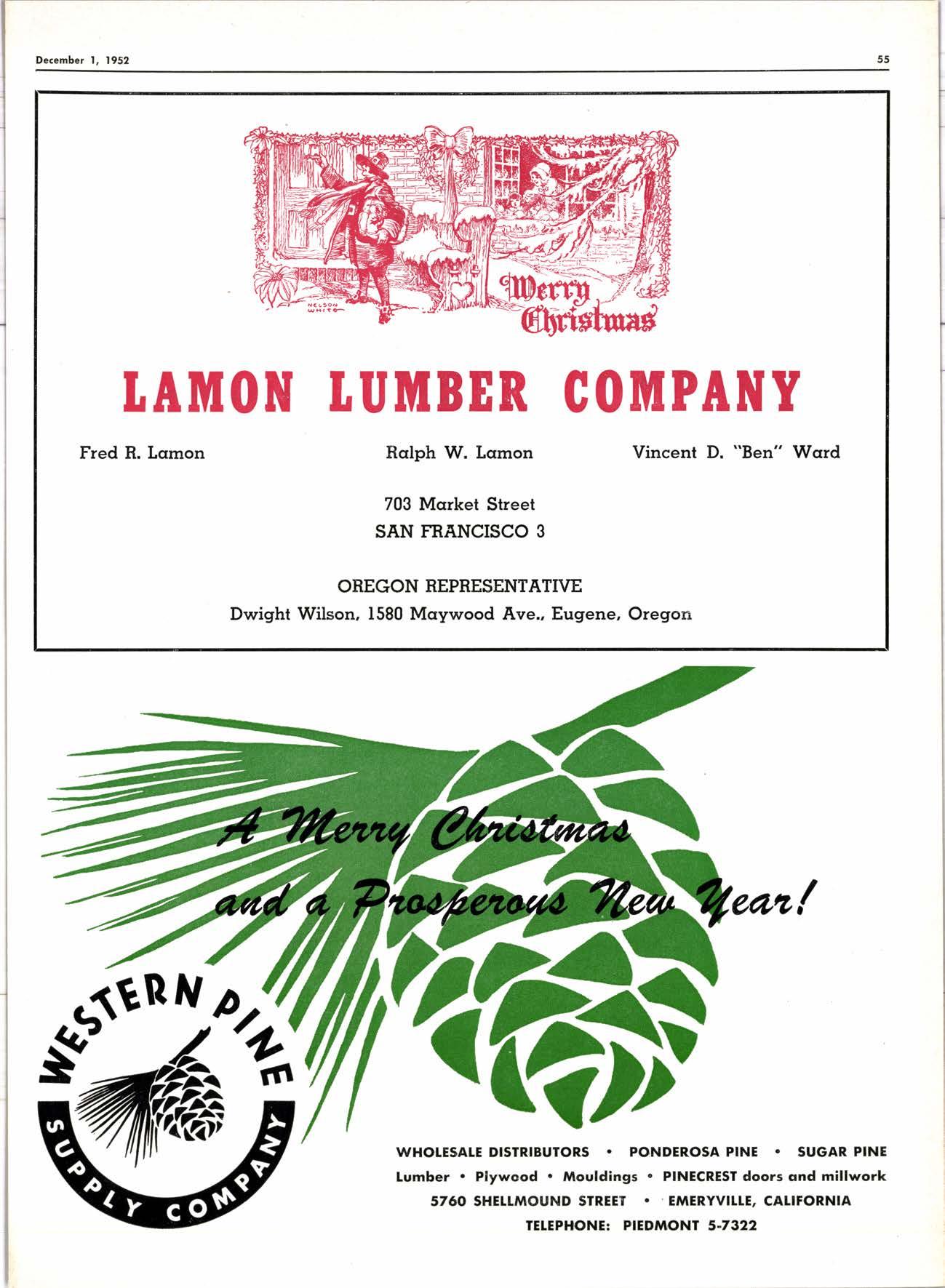
1 minute read
I.AMON I,UMBER COMPAIIY
OREGON REPRESENTATI\TE
TEIEPIiONE: PIEDII/IONI

Redwood Keeps Growing
(Continued from Page 50) economic surveys made of our forest resotlrces over a period of years. They show that forest industries are second only to agriculture in their contribution to the general welfare and economy of the nation. And as the virgin timber of the eastern areas of the countrv has been harvested, ther'e has been a growing dependence on the West for a supply of quality forest products.
Pinning the effects of this trend in California, the state norv ranks second in the United States in lumber manufacttlre, producing more than four billion board feet of lumber and.allied products last year. At the same time, the state had to import a billion feet to fill its ou'n needs. As you knou', all redwood comes from California.
So r''i.here do we go frorn here? N{y carpenter friend, dealing in inches, not feet, has the general idea.
Foremost in the Association's efforts to promote this type of conservation is the Redwood Region Conservation Council with its steady insistenc.e that members think in terms of farming, not merely logging, when considering the cutting of their timber. In addition, the Council contributes to the general program of conservation through its work in fire prevention and the Keep Green movement. Through its Redwood Circles, groups of civic leaders in the various communities in the redwood region, the Council keeps the problems of conservation constantly in each citizen's mind and, at the same time, gains the greatest possible amount of publicity for advancing the work.
The technical and research division of the Association also made valuable contributions to extending supply. During the past year, studies were made which resulted in improving methods of air seasoning the wood to assure uniform drying, which results in better quality lumber, and a testing program in cooperation with paint manufacturers on many natural exterior finishes for redwood through rvhich appreciable improvement was made in the durability of these finishes for homes with redwood exteriors. In addition, this division worked with manufacturers on the problem of utilizingtheir redwood lumber to the fullest extent, and to member mills on maintaining a high quality control.
To sum up, every phase of the redwood industry is keeping pace with the growth in its forests, encouraging that grolr'th and extending the benefits of its harvest. We look forrvard to an even more favorable future.
The Hardwood Lumber Business
(Continued from Page 52) educational and instructional programs. Its membership rose to a record level and on its broader foundations seeks to build its structure to new heights in the service of arid for the welfare of our great American Hardwood Lumber Industry.
The first planted in Christmas tree plantation 1914 in Ohio.










